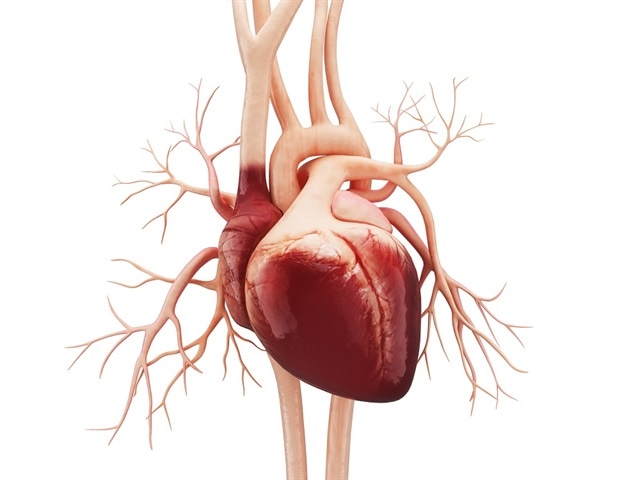Cryoballoon (CB) ablation is as efficient at decreasing recurrences of atrial fibrillation (AF) and atrial tachycardia (AT) at 1-year, when in comparison with the present most generally used approach, radiofrequency (RF) ablation, in coronary heart failure sufferers with a decreased ejection fraction (HFrEF), in keeping with late breaking analysis offered in a Scorching Line Session at this 12 months’s ESC Congress 2024 in London, UK (30 Aug – 2 Sept).
The examine discovered that CB ablation has the additional advantage that it may be carried out with a shorter process time and fewer fluid quantity throughout catheter ablation with out growing left atrium pulse stress, indicating that the danger of worsening coronary heart failure as a result of infusion load throughout ablation could also be decreased.
“AF catheter ablation is more and more carried out worldwide in sufferers with coronary heart failure, however is related to elevated dangers of procedure-related issues and dying. But little knowledge exists on which of probably the most extensively used ablation strategies finest improves scientific outcomes, survival and high quality of life,” defined lead investigator Dr Koji Miyamoto from the Nationwide Cerebral and Cardiovascular Heart in Japan.
He added: “Our outcomes present that CB ablation, a minimally invasive process that freezes out disruptive coronary heart cells, is quicker however as efficient because the generally used method of burning the cells so as to put the center again into a traditional rhythm sample. As well as, there was a really low threat of procedural issues in each teams, demonstrating that catheter ablation has develop into a lot safer through the years.”
AF impacts greater than 37 million folks worldwide [1] and sometimes co-exists with coronary heart failure, which impairs the power of the ventricle to fill with or eject blood. HFrEF happens when left ventricular ejection fraction (LVEF) is decreased to 40% or much less. The European Society of Cardiology estimates that in folks with coronary heart failure, round 60% have HFrEF [2]. The presence of AF in sufferers with coronary heart failure is related to elevated dangers of hospitalisation, stroke, and dying.
Probably the most extensively used approach for AF ablation is RF ablation, which makes use of warmth to destroy the tissue that is inflicting the center rhythm disturbance. However its technical complexity calls for a comparatively lengthy studying curve and process time. CB expertise, that includes guiding a small tube into the center to kill problematic tissue with chilly temperatures, has been utilized to simplify the process.
“Whereas there have been a number of trials evaluating RF ablation and CB ablation in sufferers with each coronary heart failure and atrial fibrillation, none have prospectively in contrast the end result between CB and RF ablation,” mentioned Dr Miyamoto. “There’s an pressing have to generate high-quality proof to information clinical-decision-making for these ablation procedures in sufferers with HFrEF.”
For the CRABL-HF trial, researchers enrolled 110 sufferers with HFrEF and AF (aged 20-85 years) at 5 websites throughout Japan who had been randomised to obtain RF ablation (55 sufferers) or CB ablation (55 sufferers). The median age was 69 years and 79% had been males.
In sufferers with cardiac implantable digital gadgets, house monitoring was tailored to permit the continual monitoring of AF episodes. In sufferers with out cardiac implantable digital gadgets, ambulatory ECGs had been recorded twice each day for 1-year after the process, after a blanking interval of 90 days.
One 12 months after the process, there was no important distinction in charges of atrial tachyarrhythmias (lasting 30 seconds or extra), occurring in 21.8% of sufferers receiving RF ablation and 22.2% of CB sufferers.
Moreover, CB ablation could possibly be carried out with considerably shorter process time (median 101 vs 165 minutes) , and fewer fluid quantity throughout CA with out growing LA pulse stress, indicating that the danger of worsening coronary heart failure as a result of infusion load throughout ablation could also be decreased.
The left ventricular ejection fraction (LVEF; a measure of how properly the left ventricle of the center pumps with every contraction) improved and the left arterial quantity index (LAVI; a measure of the amount of the left atrium divided by the physique floor space) decreased considerably after the process in each teams, enhancing coronary heart operate.
There have been additionally no important variations within the general security profile of the 2 strategies. Process-related issues occurred in a single affected person in every group: a retroperitoneal hematoma within the CB group and an arteriovenous fistula within the RF group. No procedure-related exacerbation of coronary heart failure, symptomatic cerebral infarctions, transient ischemic assaults, PV stenosis, atrio-oesophageal fistulas, or procedure-related deaths had been famous.
Through the 1-year follow-up interval, there have been two deaths—one in every group. There have been seven circumstances of hospitalisations as a result of coronary heart failure: three sufferers (5.5%) within the CB group and 4 (7.3%) within the RF group (P=1.00). There was no distinction within the composite endpoints of dying from any trigger and/or coronary heart failure hospitalisations between the 2 teams.
There have been additionally no important variations in affected person reported high quality of life (measured by the Atrial Fibrillation Impact on High quality of Life questionnaire; AFEQT) at 1 12 months, which improved after ablation in each teams (AFEQT: CB group: 68 [60-78] at baseline and 88 [80-94] at 1-year; RF group: 72 [56-81] at baseline and 90 [84-97] at 1-year).
“The underlying pathophysiology differs between sufferers with and with out HFrEF, and the elemental mechanisms of catheter ablation differ between CB and RF,” mentioned Dr Miyamoto. “As our trial has proven that scientific outcomes and high quality of life are related after CB, this simplified process must be warranted to deal with AF in most sufferers with HFrEF.”


